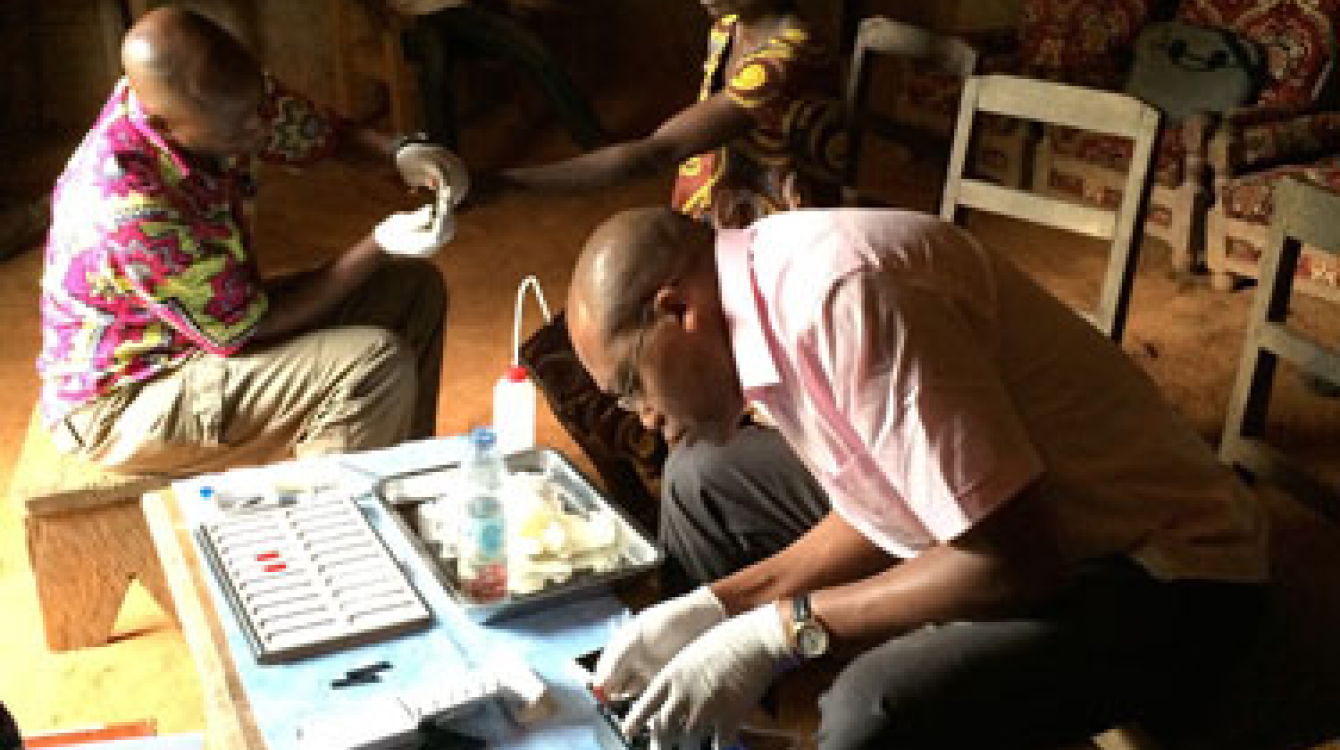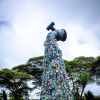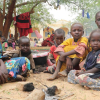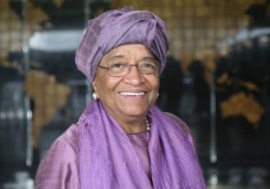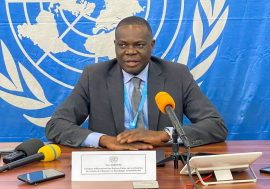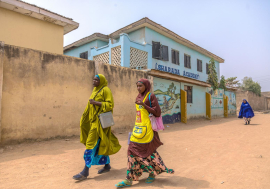New phone technology to help fight river blindness
New phone technology to help fight river blindness
Using the popular iPhone smartphone, researchers at US-based Stanford University have created a simple, portable and inexpensive diagnostic tool to diagnose river blindness, a tropical disease caused by parasitic worm larvae from an infected fly.
An easy-to-set-up microscope called CellScope Loa is attached to an iPhone, making it possible to drop a patient’s blood into the microscope’s compartment for examination.
Every year, according to the World Health Organization (WHO), more than 18 million people in Africa and other parts of the world are affected by river blindness after being bitten by the Simulium fly. This fly, found in parts of Africa, the Middle East and South America, can easily be dismissed as an ordinary pesky insect. But by simply biting the skin, an infected fly can deposit parasitic worm larvae into the bloodstream. An infected person may suffer a litany of skin problems and, in the worst cases, blindness.
According to WHO, the Simulium fly is usually found swarming around rivers in remote areas and can carry worm larvae that cause a disease called onchocerciasis, commonly known as river blindness. This in turn causes spots on the skin that can resemble the rough skin of a lizard, as well as intense, almost unbearable itching when the hundreds of larvae nestled within the body die.
However, the most serious damage onchocerciasis can cause is damage to the optic nerve, often resulting in permanent loss of vision. According to WHO, this is the second most common infectious cause of blindness globally. No vaccines exist against the disease yet and patients must take the prescribed medication twice a year for 15 years. Every year pharmaceutical company Merck, WHO and other partners organize a donation programme in which the drug Mectizan is given to river blindness patients. Similar donation programmes in Ethiopia, Nigeria, Sudan and Uganda, among other countries, have been carried out to cure millions of those affected.
Unfortunately, many of these programmes have recently been halted because the drug may pose a risk to patients who suffer from two other parasitic diseases that are also commonly caused by insects found by rivers and are often mistaken for river blindness: lymphatic filariasis (also known as elephantiasis) and loaiasis, caused by the Loa loa worm.
Though Mectizan kills the worms that cause all three diseases, it can cause harm to patients who have too many Loa loa worms in their bloodstream by wiping them all out at once, causing haemorrhaging of the brain, according to WHO. The CellScope Loa was created to avoid the risk of misdiagnosis.
Lab technicians can examine blood smears and manually identify and count the worms, a process that can take most of a day. Given the number of patients to be tested, this is very time-consuming and often impractical.
Once the CellScope Loa—invented by Stanford University researchers Thomas Nutman and Dan Fletcher—is attached to an iPhone, a patient’s blood can be dropped into the microscope’s compartment for testing. Through use of the iPhone’s internal camera, results of the test can be obtained within two minutes and can include the number of Loa loa worms present in the sample. Based on this procedure, it can be determined whether medication for river blindness needs be given to the infected patient.
The microscope can save precious time and because it works with a prompt-based interface, telling the user the exact steps to take, human error is minimized.
The Stanford University programme to manufacture these microscopes is being funded by the Bill and Melinda Gates Foundation, the US Agency for International Development and the Blum Center for Developing Economies at the University of California Berkeley.
The researchers are currently testing the devices and creating approximately 40 more. So far the results have been encouraging. An initial test was conducted in Cameroon. The second batch of microscopes is being tested in central Africa.
If future experiments with the smartphone microscope continue to produce accurate results, perhaps there is a future in point-of-care diagnoses, especially of tropical diseases.
“It demonstrates what technology can do to help fill a void for populations that are suffering from terrible, but treatable, diseases,” says Mr. Fletcher.


